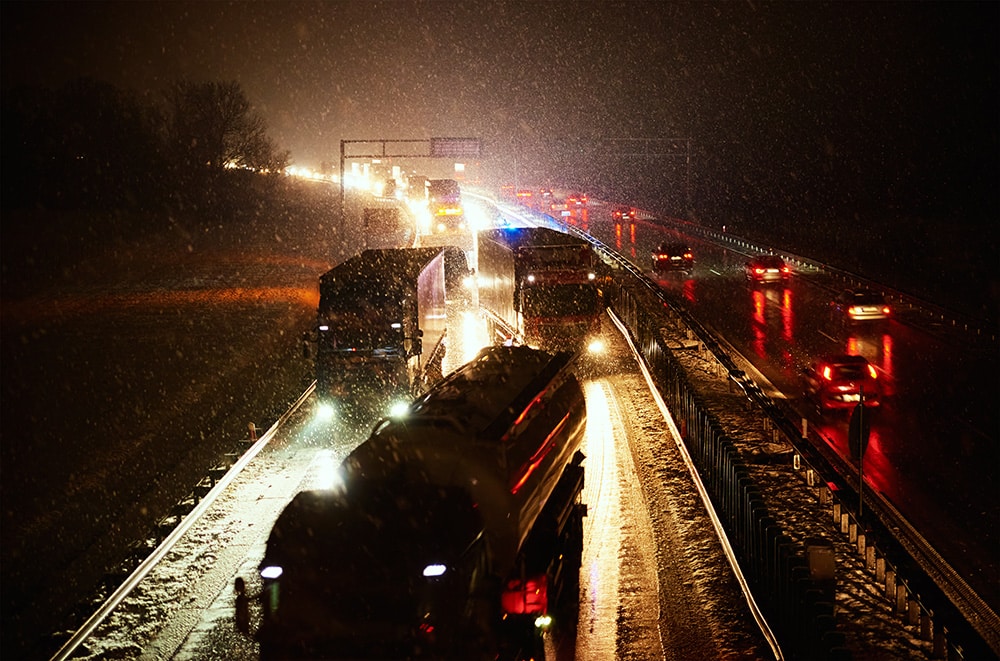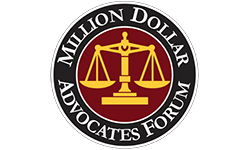Determining Fault in a Pile-Up Accident

Whether you call it a pile-up accident, a chain-reaction crash, or a multi-car collision, these names refer to a similar type of wreck involving multiple vehicles. While sorting out liability might seem fairly intuitive when two vehicles are involved in a crash, determining fault in a pile-up accident may seem far less straightforward.
Given the heavy congestion on Baltimore’s roadways, it shouldn’t come as a surprise that our Belsky & Horowitz, LLC legal team handles our fair share of these complex car accident cases every year. Below, we’ll share why these collisions occur, how liability is sorted out, and how that impacts your rights in hopes that this insight can be helpful to you if you’ve had the misfortune of becoming involved in such a crash.
What Are the Causes of Multi-Vehicle Pile-Up Crashes?
Various factors can cause the occurrence of chain reaction crashes, including driver errors such as the following:
- Speeding
- Falling asleep at the wheel of the car
- Distracted driving
- Delayed braking
- Drag racing
- Failing to yield to another motorist’s right of way
Multi-car pile-ups are most apt to occur in certain situations as well, such as situations in which:
- Road construction results in shifts in traffic patterns
- Motorists come upon sudden, unexpected hazards in their paths
- There’s heavy traffic
- An automobile experiences mechanical trouble
- Drivers are distracted
- Unexpected weather patterns emerge
Sorting Out Liability for Multi-Car Accidents
If you’ve been injured in a chain reaction crash, it’s understandable that you would want to recover compensation to pay:
- Medical bills
- Lost wages
- Other accident-related expenses that you’ve incurred
An insurance claim or personal injury lawsuit allows you to hold the responsible party liable for causing you harm.
Generally, a police report will only record what the law enforcement officer saw when they arrived on the crash scene, listings of citations issued to motorists involved, contact information for witnesses, and other factual details. These accident reports generally don’t assign fault; however, if it contains information to that effect, it doesn’t stop insurance companies and car accident lawyers from hashing such matters out.
Determining liability for a multi-car pile-up will ultimately depend on:
- Which motorist is thought to have made the driver error initiating the chain-reaction crash
- Whether any additional motorists involved in the accident took actions that caused further damage or harm
While the accident report will provide some insight to aid with the determination above, compiling other evidence may be necessary to reach conclusive decisions about liability.
Evidence That Will Be Reviewed To Determine Fault in a Baltimore Multi-Car Pileup Case
There are a few key pieces of evidence insurance companies and car accident attorneys both review to determine fault for a chain-reaction collision case. Those pieces of evidence include:
- Police reports
- Eyewitness statements
- Photographs and video footage
- Weather reports from around the time of the crash
- Medical reports for injured motorists
It may be necessary to hire a crash reconstructionist to recreate how the accident unfolded, go to the crash scene and evaluate the flow of traffic, examine road design and conditions, and evaluate traffic signal patterns in addition to making measurements of skid marks and other indicators to determine liability for the crash. Your car accident attorney can let you know when this is warranted.
Compensation Multi-Car Pile-up Victims Can Recover in Maryland
Maryland is an at-fault car insurance state, meaning motorists can hold a driver or any other party responsible for their accident-related losses that they suffer in an auto accident, such as the following:
- Medical bills
- Lost wages
- Noneconomic damages like pain and suffering, loss of enjoyment of life, and mental anguish
There are some exceptions to this rule, though. The primary one is in instances in which the contributory negligence rule applies.
How the Contributory Negligence Rule Affects Liability Determinations in Maryland
Maryland is one of a handful of states that follows the contributory negligence rule. It limits a person from recovering compensation following an accident if the plaintiff who suffered harm also acted negligently, thus contributing to their injury.
When To Discuss Your Baltimore Multi-Car Pileup Crash With an Attorney
Multi-car pile-ups are a unique type of accident. They’re often referred to as multiple impact crashes because motorists caught in the middle of the pack tend to experience initial impact as they collide with the vehicle in front of them, and then one or more other cars strike the auto over and over again. What may initially start as a low-speed fender bender may soon evolve into a very dangerous game of bumper cars, resulting in catastrophic injuries or death.
If you became entangled in a chain-reaction crash that left you seriously hurt that you believe is wholly attributable to others’ negligence, then you owe it to yourself to seek justice. Sorting out liability in complex car accident cases is seldom straightforward, and thus why it’s in your best interest to have a Baltimore car accident lawyer like ours at Belsky & Horowitz, LLC involved from the start. Doing so will protect your right to a settlement if the evidence is stacked in your favor. Your initial consultation is free.





